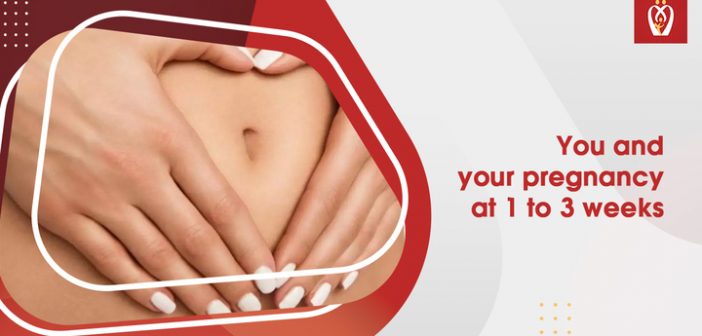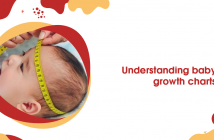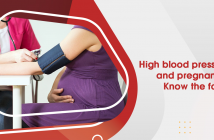Because of how pregnancy is assessed, you aren’t genuinely pregnant during the first two weeks or so of your pregnancy. The LMP dating technique, used by GPs to determine the typical duration of a pregnancy, begins on the first day of the woman’s last menstrual period.
So, when you’re only one week pregnant, you’ve just begun your menstrual cycle. You’re ovulating at two weeks pregnant.
You basically aren’t even 1 or 2 weeks pregnant, but for your healthcare provider’s calculations, you are. But even though you may not experience any of these early indicators of pregnancy, there may be a lot going on inside.
Week 1 pregnancy
Your body is getting ready for the possibility of becoming pregnant. In the first week of pregnancy, a woman’s egg—the body’s biggest single cell—develops.
You’ll be in the follicular phase of the ovarian cycle throughout the first few days of pregnancy. This phase begins at the same time as your monthly cycle. FSH, or follicle-stimulating hormone, is the first hormone to trigger many immature follicles to begin preparing for ovulation.
By day 5 or 6, the dominant egg has taken over. Blood supply and estrogen production are frequently greater in the dominant egg. Additionally, estrogen promotes uterine lining thickness.
The dominant egg develops in the follicular phase and awaits ovulation.
When you’re pregnant, you’re going through your last period before the baby is born. So, counting the first day of your last menstruation as your projected gestational age means that the first day of your pregnancy will be the day you begin menstruating.
Last month’s follicles, eggs, and uterine tissue will be flushed out of your body. A higher menstrual flow is common for most women, especially in the first two days of pregnancy or your period. A fresh cycle may be better prepared by doing this.
A fresh egg is already forming, and your uterine lining or endometrium will begin to thicken again once your period has ended. After conception, the fertilized egg will be implanted in this lining, ready to begin the process of growth.
Week 2
According to medical experts, there’s still no embryo in the second week of pregnancy. On the other hand, your body has been preparing for pregnancy since week 1, when it shed its old uterine lining and ejected last month’s unfertilized egg from your ovaries.
Ovulation occurs during the second week of pregnancy. It’s best to keep track of your cycle at this time so you can identify your most fertile days. When your body is prepared to ovulate, you’ll notice a number of indicators.
Pregnancy is still in its early stages, and the changes are minor. Ovulation will begin to take place in your body during the second week of pregnancy. Your fertility and your chances of becoming pregnant might be improved if you keep note of these signs. Among the most frequent ovulation symptoms are the following:
Ovulation causes your basal body temperature to decrease, and then it increases by half a degree to its highest peak. You can pinpoint the precise time of ovulation by keeping tabs on your basal body temperature (BBT).
Many women use their cervical mucus as a way to tell when their ovulation cycle is about to begin. Cervical mucus becomes clear, thin, elastic, and “egg white-lie” as ovulation approaches. Allows sperm to more readily move up the vaginal canal.
Hormonal changes that lead to ovulation may cause some women to have an increased sense of smell in the early days of pregnancy.
Tender breasts are frequent as ovulation approaches, as are aches and pains in the breasts.
When a woman releases an egg, she may experience mild discomfort or a pang in her belly.
Spotting may occur when the follicle ruptures and the egg breaks into the Fallopian tube.
Week 3
There’s no way to determine exactly when an egg will be released from your ovary until around two weeks before your next period. Additionally, the time it takes for your partner’s sperm to reach your fallopian tube might range from 30 minutes to a few days.
GPs use the start of your last menstrual cycle to time pregnancy, eliminating the mystery of when you were conceived. For some reason, your GP begins counting down the days until you give birth, even if it seems strange.
After three weeks of development, your early-stage baby (which GPs refer to as an embryo) is nothing more than a clump of rapidly proliferating cells. This clump will continue to grow over the next several weeks and months. Inner cells become the foetus, while the outside cells become the placenta, which feeds sustenance to your unborn child and performs other duties.
Pregnancy is still in its infancy, so don’t expect to notice any major changes in your body. Keep in mind that you may not have missed your period in week three and may have no clue that you are pregnant. There are no outward indicators of pregnancy, no matter how long you’ve been trying to become pregnant with your spouse.
It’s never a bad idea to double-check your pregnancy status, whether or not you’ve been actively trying for a child. As accurate as clinic urine or blood tests, home testing kits are now far more convenient. Make sure you follow all of the directions for taking the test and then review the results carefully. Do not assume you are not pregnant if the test results are negative.
Take a prenatal vitamin containing folic acid and follow a healthy diet and exercise regimen while pregnant (at least 400 micrograms). In addition, you should abstain from smoking and consuming alcohol and limit your consumption of caffeine.
Pregnancy tracking couldn’t be easier with the Nurturey PinkBook. It provides the most precise data and makes it easy to keep track of the progress of your pregnancy. Check out the app now!







